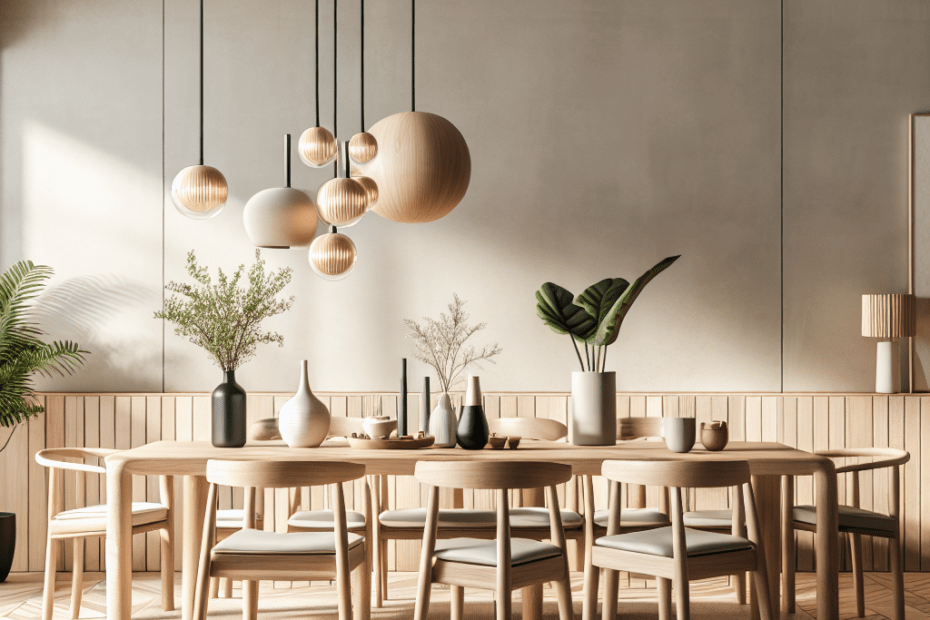“`html
Embracing the Scandinavian Dining Room Design
Scandinavian dining room design is increasingly popular for its minimalist elegance and functional style. Many homeowners are drawn to its clean lines, neutral colors, and focus on simplicity. Modern dining rooms often incorporate Scandinavian elements to create a serene and inviting atmosphere. This design style is not just about aesthetics; it is also about creating a space that promotes a sense of peace and enhances the dining experience.
According to a survey conducted by Statista in 2022, 65% of respondents preferred Scandinavian design elements in their home interiors, indicating a trend towards simplicity and functionality.
Key Features of Scandinavian Dining Room Design
Scandinavian design is known for several characteristics that differentiate it from other styles:
- Neutral Color Palette: Utilizes whites, grays, and earthy tones to create a calm and open ambiance. These hues make dining rooms appear more spacious.
- Natural Materials: Wood, leather, and wool bring warmth and texture to the space. Wood, especially, is central to Scandinavian design, providing a sense of nature indoors.
- Minimalism: Focuses on functionality with minimal clutter, promoting both visual clarity and functional living. Each piece of furniture has a purpose without excessive ornamentation.
- Lighting: Uses soft, natural lighting to create a cozy environment. Designs typically incorporate large windows to maximize daylight.
These elements combine to create dining rooms that are both stylish and practical, where every piece of furniture and decor has a deliberate and thoughtful purpose.
Steps to Create a Scandinavian Dining Room
Transforming a regular dining space into a Scandinavian haven involves several strategic steps:
1. Choose the Right Furniture
Furniture should exemplify simplicity and practicality. Opt for dining tables and chairs with clean, simple lines made from natural woods like oak or ash. These materials add warmth and an organic feel to the room. According to the same Statista survey, 40% of furniture purchases in 2022 leaned towards minimalist styles, emphasizing functionality.
2. Focus on a Neutral Color Scheme
Begin with a neutral base on walls and floors. Whites and light grays are staples in Scandinavian design for a fresh, airy feel. Complement these tones with monochromatic accents or muted shades for textiles and decorative elements.
Color Palette Ideas
| Primary Color | Accent Color |
|---|---|
| White | Dusty Rose |
| Light Gray | Mint Green |
3. Incorporate Textures
Textures play a crucial role in adding depth to Scandinavian dining room design. Use woven textiles, woolen throws, or a jute rug to introduce subtle textures that maintain the overall minimalist feel.
4. Maximize Natural Light
Large windows are a typical feature in Scandinavian design, allowing for ample natural light. If large windows are not feasible, mirrors and light-colored walls can help reflect and maximize available light.
5. Add Simple Decor
Decorative items should be minimal yet meaningful. Simple wall art, potted plants, or a single sculptural piece can personalize the space without cluttering it.
Benefits of a Scandinavian Dining Room
The appeal of Scandinavian dining rooms goes beyond aesthetics. Here are some key benefits:
- Tranquility: A decluttered space with soothing colors promotes relaxation, ideal for enjoying meals.
- Functionality: Emphasizes utility without sacrificing style, ensuring that every piece serves a purpose.
- Timeless Style: Minimalism and natural materials are always in vogue, reducing the need for frequent updates.
Key Takeaways
- Scandinavian dining room design is characterized by minimalism, natural materials, and neutral colors.
- Essential elements include functional furniture, textured accents, and maximized natural light.
- Benefits include a serene atmosphere, functionality, and a timeless style that remains relevant.
FAQs
-
What materials are best for Scandinavian dining furniture?
Wood is the top choice, specifically light woods like oak or ash, complemented by leather or wool for texture.
-
How can I incorporate color into my Scandinavian dining room?
Use neutral bases and add muted or pastel tones as accents through decor or textiles.
-
Is Scandinavian design suitable for small dining rooms?
Yes, its emphasis on simplicity and functionality can make small spaces feel larger and more open.
-
What lighting options fit the Scandinavian style?
Opt for pendant lights or floor lamps with simple designs that provide soft, warm light.
-
Can I mix Scandinavian design with other styles?
Absolutely, combining it with contemporary or industrial elements can create a unique, personalized space.
“`
